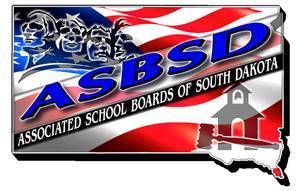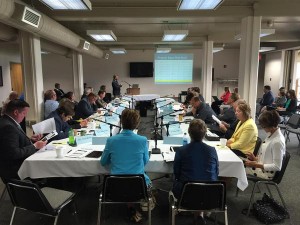The latest, and potentially most in-depth, study of K-12 education headed down the homestretch eying its end-of-the-year finish line with hopes of finding solutions that live up to its first place name.
Yet, after the first meeting (7/7) of the full Blue Ribbon Task Force, the magnitude of the work that lies ahead to find a fix for K-12 education’s teacher shortage and funding challenges is deeper than maybe anyone thought.
“This is going to take some time and it’s going to take some effort,” Gov. Dennis Daugaard, who commissioned the study in February, said during his introduction.
“These first meetings will look at facts, not opinions, not policy.”
Task Force members wasted no time digging into data. State officials shared information on the state’s funding formula, revenue sources and tax levies.
The most extensive review of South Dakota’s K-12 financials came during a presentation by Michael Griffith, a Senior School Financial Analyst from the Education Commission of the States, who was charged by the task force to study teacher salaries and education expenditures.
What Griffith found in his examination was there’s no easy answer for the state’s discrepancy in teacher salaries and education expenditures.
“I was hoping there would be a simple explanation,” Griffith told task force members. “There is not.”
Nationally, South Dakota ranks last in teacher pay, but 38th in per-pupil spending. Griffith presented a graphic (see below) correlating teacher salaries and per-pupil spending that South Dakota ranked at the bottom of.
“My question is where are we spending (dollars) if we’re not spending it on teacher pay?” Rep. Mark Mickelson asked.
Griffith noted a few partial explanations for the difference were the total number of teachers and administrators, school district sizes and budgetary decisions.
One specific budgetary decision discussed by the task force was the reserve levels of districts.
“These numbers make me a little nervous to talk about,” Griffith said, noting that South Dakota school districts have, on average, higher year end reserve percentages compared to other states, but that reserve fund data is tracked differently in other states.
“I think you need to do a district by district analysis,” Griffith said.
Griffith offered some potential ideas to remedy the discrepancy in salaries and spending and improve teacher salaries overall, including setting spending requirements, earmarking funding for salaries, setting a minimum teacher salary base or establishing a statewide salary schedule. He noted that performance pay plans in other states were normally unsuccessful and removed after a few years.
“You’re going to have to look at these districts individually,” Griffith said. “You don’t have that home run.”
In addition to Griffith’s review, task force members were briefed on the current South Dakota school funding from by the Department of Education, Bureau Finance & Management and Department of Revenue.
Task Force Co-Chair Rep. Jacqueline Sly also updated the committee on the state-wide listening sessions held in June at which 80 school district and 27 legislative districts were represented. Rep. Sly said TIE will publish a report on findings of the sessions in August.
Sen. Deb Soholt, Task Force Co-Chair, cited that the group is still reviewing the data and was not at the point of making “leaps” in their interpretation of the information presented.
“We really have to think about our kids,” Sen. Soholt said.
The Blue Ribbon Task Force is scheduled to meet in Pierre again on Wednesday, Aug. 19 and, after the first meeting, ASBSD Executive Director Wade Pogany remains optimistic about the study.
“The tone of the members was serious and their questions suggested they wanted to learn more, wanted to seriously look at the data and wanted to find the root of our education funding problems,” Pogany said.
“That’s a good sign.”
For updates on the Task Force, check the ASBSD Twitter feed and Blog.


